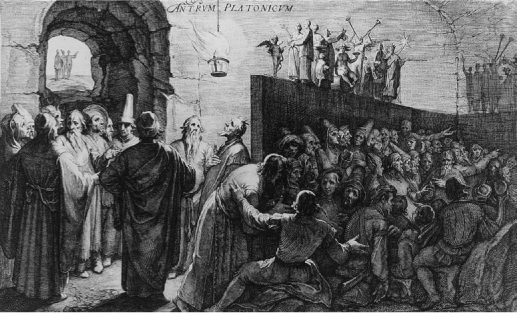Classical Greek MythologyOrpheus, Orphism, and Philosophical Myths |
What is Plato’s cave myth? |
In the sixth book of the Republic Plato develops an allegory which has sometimes been called a “myth.” He has Socrates ask his listeners to imagine some men who have always lived in an underground place that can only be reached by way of a passage that eventually opens to the light. The men are chained by the neck; they can see only what lies in front of them. A fire creates light above and behind them, and between them and the fire is a track with a wall below it. The wall hides other people behind it, much as puppeteers are hidden in a puppet show. These people manipulate objects that appear on the track above them. The objects are representations of animals, humans, and other figures. The people chained to the wall cannot see the fire, the opposite wall, or the track; they can see only the shadows projected on the wall in front of them. When the manipulators behind the wall add voices to the objects they move, the prisoners hear only echoes of those voices. Plato, through Socrates, says that the condition of the prisoners stands for our position in relation to reality. As are we, the prisoners are separated from the source of reality and are condemned to see only shadows of being.

This 1604 engraving attempts to capture the fascinating philosophical situation of the cave myth posited in Plato’s Republic.
